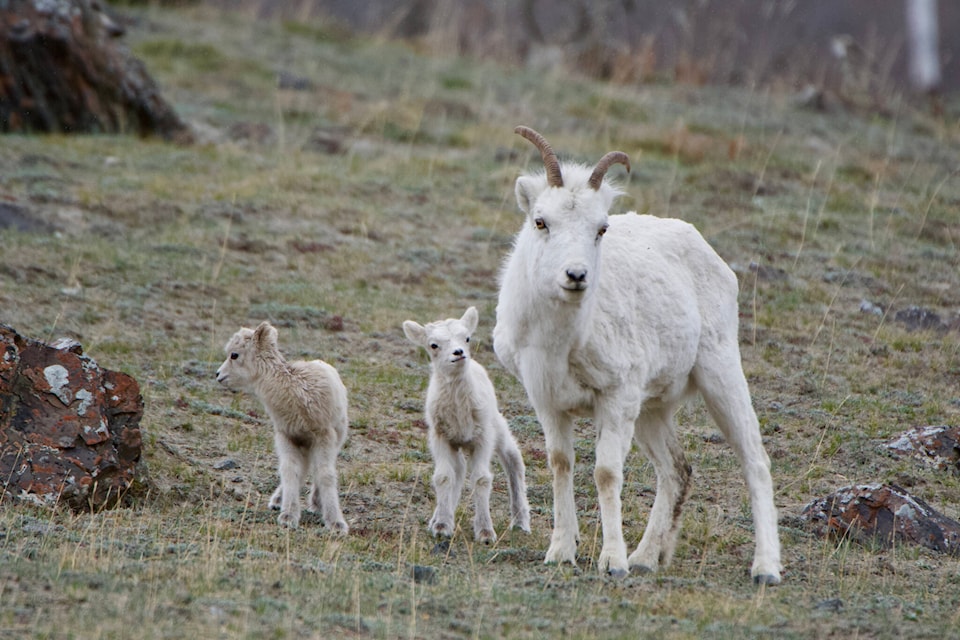In the face of declining populations of wild thinhorn sheep in five management units, the territorial government is commencing engagement to help decide what is to be done.
The units in question are all located in the southwest Yukon. They are: Brooks Arm, Ruby Range, Donjek, Nutzotin and Flat Top. The government has begun to consult with First Nations, outfitters and other stakeholders who might be affected. Consultation began in November and is expected to wrap up in early 2024.
A Nov. 29 notice from the government states that aerial surveys conducted over the last two years show population declines ranging from 16 to 63 per cent since 2015 and 2016 for the herds in question.
Reports on harvest surveys state that the population estimates for the Ruby Range and Brooks Arm Sheep Management Units are the smallest recorded since surveys began in the 1970s. A decline of 37 per cent of the population, or 77 sheep, has been observed in the Brooks Arm. Ruby Range saw a 191 sheep decline, 24 per cent of the adult population in the same timeframe.
A below-average lamb recruitment rate has been observed region-wide in recent years but this trend improved somewhat in 2023.
Actions listed as possibilities for checking the decline are: Wildlife Act permits, Permit Hunt Authorizations, registration hunts and voluntary or emergency closures.
Government communication states that the harvest of full-curl rams totalling no more than four per cent of the adult population is considered sustainable. The estimated harvest rate for 2022 slightly exceeded this for the Brooks Arm with a 4.2 per cent estimate. The harvest rate for 2023 for the Nutzotin area south of Beaver Creek was estimated at 6.6 per cent.
“The Yukon’s thinhorn sheep is an iconic species that is significant to our territory. Recent population declines are concerning and action must be taken to avoid potentially irreversible impacts. We acknowledge the importance of sheep to Yukon First Nations, resident hunters, the outfitting industry and all Yukoners. We are committed to working with partners to protect them for current and future generations,” said Nils Clarke, the territory’s environment minister.
The notice states that any management actions taken will be made public prior to the 2024 hunting season.
“The declining sheep populations in these areas are likely due to environmental conditions such as deep snowpack, ice and late springs, which could have impacted food sources and lamb survival rates over the past few years. This is something that other government agencies have also observed in Northern B.C., Alaska, and other parts of the Yukon,” a Yukon department of Environment representative said.
Other jurisdictions have seen wild sheep populations suffer due to Mycoplasma ovipneumoniae (M. ovi), a harmful bacteria that can grow in animals’ nasal cavity and sinuses. It is not presently a driver of sheep population decline in the Yukon as it has not been found in Yukon wild sheep or any other species in the territory. The department of Environment spokesperson said the Yukon recognizes that M.ovi is a concern for wildlife health and testing for it among the Yukon’s thinhorn sheep population has been ongoing since 2015.
Contact Jim Elliot at jim.elliot@yukon-news.com
